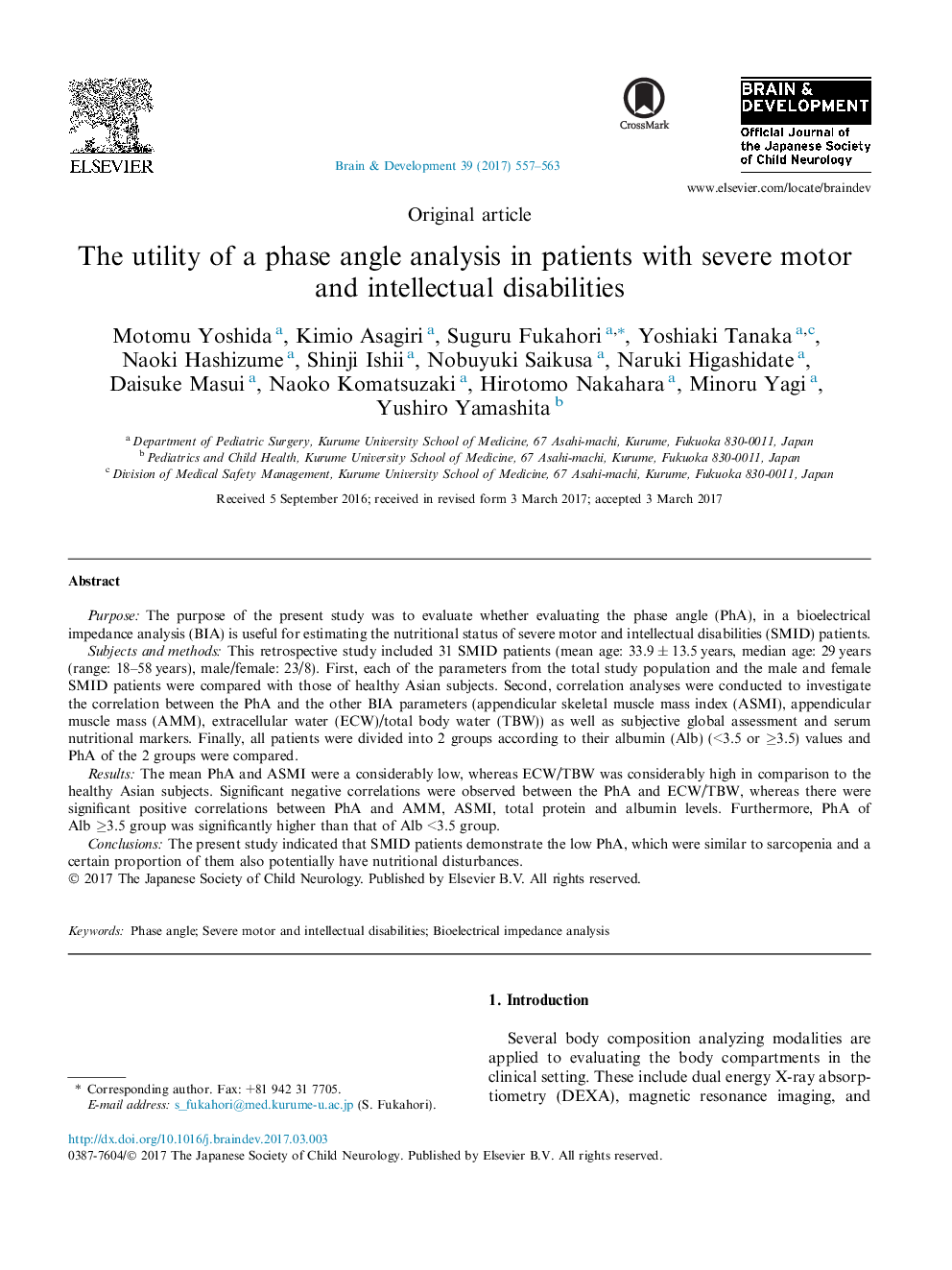| Article ID | Journal | Published Year | Pages | File Type |
|---|---|---|---|---|
| 5626419 | Brain and Development | 2017 | 7 Pages |
PurposeThe purpose of the present study was to evaluate whether evaluating the phase angle (PhA), in a bioelectrical impedance analysis (BIA) is useful for estimating the nutritional status of severe motor and intellectual disabilities (SMID) patients.Subjects and methodsThis retrospective study included 31 SMID patients (mean age: 33.9 ± 13.5 years, median age: 29 years (range: 18-58 years), male/female: 23/8). First, each of the parameters from the total study population and the male and female SMID patients were compared with those of healthy Asian subjects. Second, correlation analyses were conducted to investigate the correlation between the PhA and the other BIA parameters (appendicular skeletal muscle mass index (ASMI), appendicular muscle mass (AMM), extracellular water (ECW)/total body water (TBW)) as well as subjective global assessment and serum nutritional markers. Finally, all patients were divided into 2 groups according to their albumin (Alb) (<3.5 or â¥3.5) values and PhA of the 2 groups were compared.ResultsThe mean PhA and ASMI were a considerably low, whereas ECW/TBW was considerably high in comparison to the healthy Asian subjects. Significant negative correlations were observed between the PhA and ECW/TBW, whereas there were significant positive correlations between PhA and AMM, ASMI, total protein and albumin levels. Furthermore, PhA of Alb â¥3.5 group was significantly higher than that of Alb <3.5 group.ConclusionsThe present study indicated that SMID patients demonstrate the low PhA, which were similar to sarcopenia and a certain proportion of them also potentially have nutritional disturbances.
